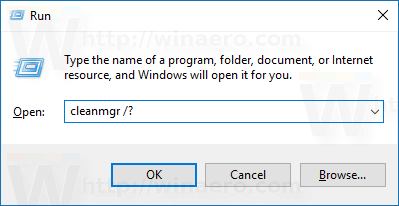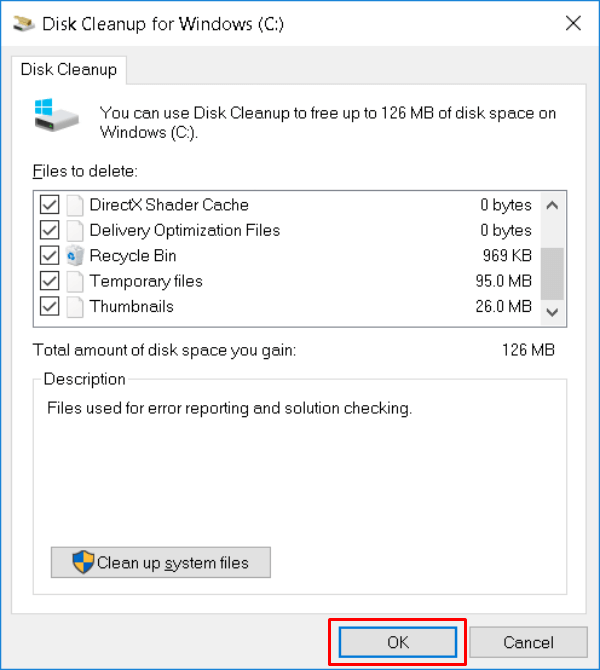

- #Windows cleanup utility windows 10 command update#
- #Windows cleanup utility windows 10 command free#
Thankfully, Windows 11 packs several built-in options to free up storage by deleting these unwanted files. The clutter not only eats storage space on the device but also makes it feel slow and sluggish.
#Windows cleanup utility windows 10 command update#
These could be temporary files created by apps, junk internet files, software leftovers, update logs, cache, and more. When the process comes to an end, Disk Cleanup should display a summary of the cleaning process, displaying the amount of free data on your drive after the process came to an end.Your Windows computer may get slow over time due to the accumulation of junk files. In this case, you’ll have to turn to the /verylowdisk parameter, which fires up Disk Cleanup and removes all unnecessary data without any further prompt: To launch Disk Cleanup and remove the files you previously configured with /sageset, the command should look like this (make sure you use the correct number):Īt the same time, you can just run Disk Cleanup with even seeing the user interface. Make your changes and then close the window. The number at the end of the parameter indicates the configuration profile. On the other hand, if you want to configure Disk Cleanup for specific settings and choose what to clean every time, you must first use the /sageset parameter to create your configuration. For example, the aforementioned command fires up the Disk Cleanup interface and lets you choose what to clean, but if you want to have all boxes checked by default and delete everything, the command should look like this: There are additional parameters that you can use to enhance the process. For example, for the C: drive the command should look like this:

Obviously, you need to change the driveletter tag with the drive you want to clean.

The standard command to launch Disk Cleanup for a specific drive is the following: cleanmgr.exe /d driveletter To do this, type cmd.exe in the Start menu > right-click Command Prompt > Run as administrator. You’ll be prompted to choose the drive you want to clean before getting to the same screen as in the case of the method described above.ĭisk Cleanup can delete downloaded program files, temporary Internet files, delivery optimization data, Windows error reports, previous Windows installation, and so much more.Īnd in addition to the methods described above, you can also launch Disk Cleanup and quickly remove this data from the command line.įirst of all, you need to launch an elevated Command Prompt window (this is an instance of the app with administrator rights).

You can also click the Start menu, type Disk Cleanup and hit enter. Microsoft will deprecate this Windows utility, but in Windows 10 version 1903 you can still use it not only manually, but also in more complex scripts to delete data you no longer need.īasically, you can launch Disk Cleanup in several ways, and the easiest is this one: File Explorer > right-click desired drive > Properties > General > Disk Cleanup If you want to try out Storage Sense yourselves, launch the Settings app and head over to the following location:īut just like the previous Windows 10 versions, the upcoming version 1903 will also include Disk Cleanup, the famous tool that also lets you clean up your drives. Storage Sense, a feature that originally debuted on Windows Phone, is available on Windows 10 PCs too, and it helps delete data like temporary files, content in Recycle Bin, and other unnecessary data automatically.įurthermore, Storage Sense can take care of the available storage automatically, so whenever a certain threshold is reached, it can kick in and remove the files you no longer need on its own. Windows 10 features new storage tools that help users automatically clean up their drives when they are running low on storage.


 0 kommentar(er)
0 kommentar(er)
